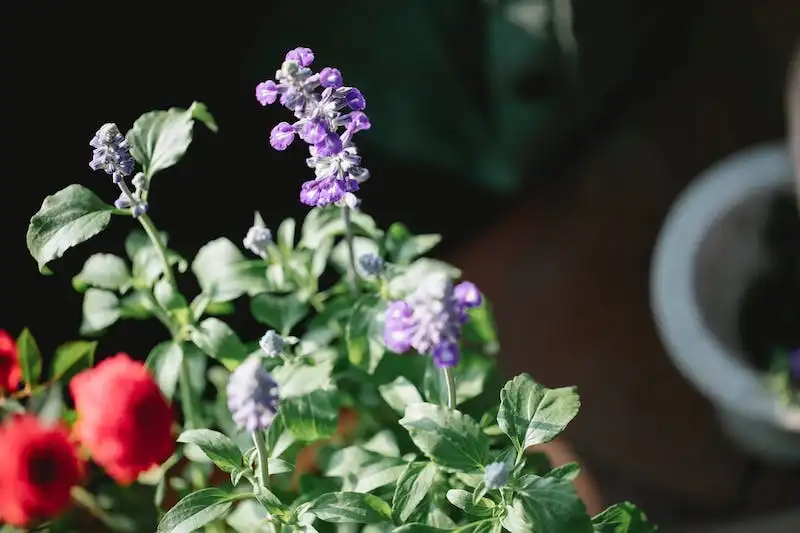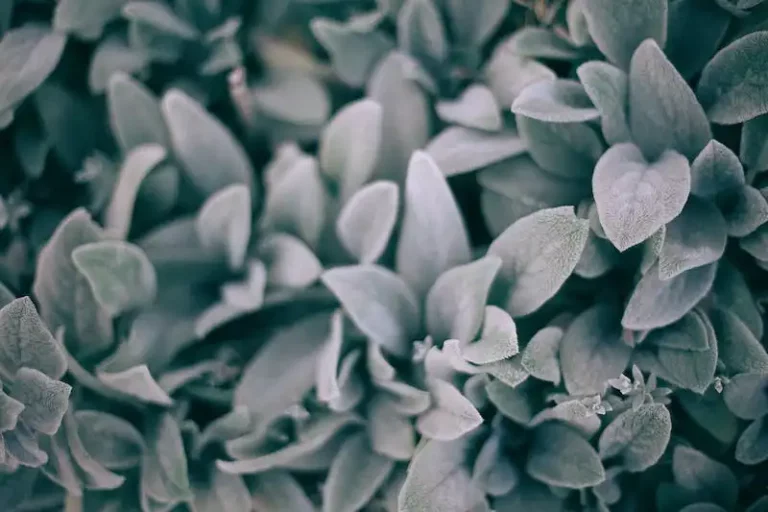The Christmas cactus, also known as Schlumbergera truncata, is a popular houseplant that is native to the coastal mountains of Brazil. Unlike most cacti, the Christmas cactus is not drought tolerant and should not be overwatered. The leaves of the Christmas cactus are unique, with thick margins and leaf-like stems that give the plant its characteristic shape.
During the holiday season, the Christmas cactus produces beautiful flowers that can range in color from white to orange. The flowering process of the Christmas cactus is triggered by the shorter daylight hours and cooler temperatures that occur in late fall and early winter. However, in order for your Christmas cactus to flower, it must be given the right conditions.
One important rule when it comes to caring for Christmas cactus is to avoid overwatering. Although it is a succulent plant, the Christmas cactus should be kept slightly drier than most cacti. Overwatering can cause the leaves to yellow and the stem to become mushy and rot. On the other hand, underwatering can also lead to problems, such as wilting and a lack of blooming.
In order to maintain the health of your Christmas cactus, it is important to find a balance between overwatering and underwatering. Most experts recommend allowing the top inch of soil to dry out between waterings. During the holiday season, when the plant is flowering, it is especially important to make sure that the soil is kept moist but not soggy.
Controlling pests is another challenge when it comes to caring for Christmas cactus. Common pests that can affect the plant include mealybugs and spider mites. These pests can be easily identified by their small size and the presence of white or orange spots on the foliage. In order to get rid of these pests, it is important to regularly inspect your Christmas cactus and take appropriate measures to control their population.
The Christmas cactus has been a favorite holiday plant for generations, and it is easy to see why. With its unique leaf-like stems and beautiful flowers, it adds a touch of color and beauty to any room during the holidays. So, if you are looking for a plant that is easy to care for and will brighten up your home during the holiday season, look no further than the Christmas cactus!
Why Are the Leaves on My Christmas Cactus Limp
Christmas cacti, also known as Schlumbergera, are popular houseplants that belong to the Cactaceae family. They are native to the cloud forests of Brazil, where they grow as epiphytes in the shady understory. Their natural habitat is characterized by cool temperatures, high humidity, and filtered sunlight.
The leaves of a Christmas cactus are thick and succulent, with serrated edges. They are usually flat and round in shape, but can vary slightly between species. The leaves play an important role in the overall health of the plant, as they help with photosynthesis and water storage.
One common issue that Christmas cactus owners may encounter is limp leaves. There are several potential reasons why the leaves on a Christmas cactus may become limp:
1. Overwatering
Christmas cacti are succulent plants, meaning they store water in their leaves and stems. They have adapted to survive in environments where water is scarce, so they are prone to root rot if overwatered. It is important to water Christmas cacti sparingly, allowing the soil to dry out between waterings. Too much water can lead to limp leaves and even root rot.
2. Underwatering
On the other hand, not watering your Christmas cactus enough can also cause limp leaves. These plants need regular watering, especially during the growing season. It’s important to strike a balance and water your Christmas cactus when the top inch of soil dries out.
3. Temperature and Light
Christmas cacti are naturally adapted to the cool temperatures and filtered sunlight of their forest habitat. If they are exposed to temperatures above 90°F (32°C) or direct sunlight, their leaves may become limp. It’s best to keep Christmas cacti in a cool, bright location away from direct sunlight.
4. Pest Infestation
Christmas cacti can be susceptible to pest infestations, such as spider mites or scale insects. These pests can cause damage to the leaves, resulting in limpness. Inspect your Christmas cactus regularly for any signs of pests, such as tiny webs or small, brown scales on the leaves.
5. Seasonal Changes
Christmas cacti are known for their blooming during the holiday season, but they also require a period of dormancy. During the summer months, you may notice your Christmas cactus producing fewer flowers and its leaves becoming slightly limp. This is a normal part of the plant’s seasonal cycle, and the leaves should regain their rigidity as the blooming period approaches.
To maintain the health of your Christmas cactus and prevent limp leaves, here are some tips:
1. Proper Watering
Make sure to water your Christmas cactus thoroughly but let it dry out between waterings. Watering once every one to two weeks is usually sufficient, depending on the environmental conditions and the size of the pot.
2. Controlling Pests
Inspect your Christmas cactus regularly for signs of pest infestation. If you spot any, take immediate action to control the infestation. You can use an appropriate insecticide or try natural remedies like neem oil.
3. Provide Optimal Temperature and Light
Keep your Christmas cactus in a cool and bright location, away from direct sunlight. Temperature fluctuations and excessive heat can cause the leaves to become limp. You can also use artificial lights to supplement natural light if needed.
4. Maintain Proper Humidity
Christmas cacti thrive in high humidity environments. To increase humidity levels, you can place a tray of water near the plant or use a humidifier. Mist the leaves occasionally, but avoid misting when the plant is in direct sunlight or when the room is too warm.
By following these basic care tips, you can help ensure that your Christmas cactus remains healthy and vibrant throughout the year. Don’t hesitate to reach out to your local gardening center or contact the Clemson Extension or Cabarrus County Extension for more specific guidance on caring for your Christmas cactus.
Overwatering
Overwatering is a common problem that many Christmas cactus owners face, especially with the truncata and gaertneri varieties. When the soil is kept too moist, the roots become waterlogged and can’t absorb oxygen, leading to root rot and stem lesions.
One of the first signs of overwatering is wilted and limp foliage. The leaves may turn yellow or even brown at the margins. If the problem is not addressed, the stems may start to rot, turns brown, and become mushy.
This overwatering issue is often seen in growers who follow the “water when the top inch of soil is dry” rule. However, this guideline does not take into account the different humidity levels of different environments. Some environments may require less frequent waterings, while others may need more.
Christmas cacti are tropical succulent plants that are native to the humid forests of Brazil. In their natural habitat, they grow as epiphytes on trees, with their segmented leaves storing water. As a result, overwatering can be a particular problem for these plants.
To avoid overwatering your Christmas cactus, it’s important to follow a few tips. First, make sure the soil dries out between waterings, allowing the roots to get some oxygen. Second, provide proper drainage for the plant to prevent water from sitting around the roots. Third, avoid watering the plant during its dormant period, which occurs after blooms have faded and the plant requires a period of darkness to encourage blooming again. Lastly, consider the humidity levels in your room. These cacti thrive in higher humidity, so using a humidifier or placing a tray of water near the plant can help.
If you suspect that your Christmas cactus has been overwatered, swift action is necessary. Remove the plant from its pot and examine the roots. Healthy roots should be white or light brown, while rotten roots are mushy and dark. Trim away any damaged roots and repot the plant in fresh, well-draining soil.
By avoiding overwatering and creating the right conditions for your Christmas cactus, you can ensure that it will thrive and produce beautiful blooms for many holiday seasons to come.
Underwatering
Underwatering is a common issue that Christmas cactus owners should be aware of. Sometimes, in an effort to avoid overwatering, they may inadvertently underwater their plants. Both Schlumbergera truncata and Schlumbergera floribunda, known as Christmas cacti, can suffer from underwatering.
Underwatering can be caused by a few factors. One reason is that the thick succulent stems of Schlumbergera can sometimes store water for extended periods, which means they may not show signs of being thirsty right away. Additionally, these cacti originate from tropical rainforest environments, where humidity levels are high. When grown in less humid indoor conditions, they can easily become dehydrated.
Signs of underwatering include wilting stems and a lack of flowering. The stems may become thin and shriveled, whereas a properly hydrated cactus will have plump segments. The lack of flowers can be attributed to the fact that a dehydrated plant may not have enough water to support the energy required for blooming.
To prevent underwatering, it is recommended to water the cactus thoroughly once the top inch of soil feels dry to the touch. However, be cautious not to overwater as well, as excessive moisture can lead to root rot. Proper watering practices will help maintain the health and vigor of your Christmas cactus.
It is important to note that the term “Christmas cactus” is often used interchangeably for both Schlumbergera truncata and Schlumbergera bridgesii. The main difference between the two is the shape of their segments. While S. truncata has sharply toothed segments, S. bridgesii has rounded segments. Both varieties are sold as Christmas cacti because they tend to bloom around the holiday season, with S. truncata often blooming closer to Thanksgiving and S. bridgesii closer to Christmas.
Underwatering can also predispose the cactus to other issues. When a plant is stressed from lack of water, it becomes more susceptible to pests and diseases. Common pests that may infest an underwatered Christmas cactus include scale insects and mealybugs. These arthropods can easily attach themselves to the cactus and cause damage. Additionally, underwatering can make the cactus more prone to fungal infections, such as Drechslera oxysporum, which can result in black spots on the leaves or stem.
If your Christmas cactus has been underwatered, the first step in nursing it back to health is to thoroughly water the plant. Ensure that the water reaches the root zone and avoid leaving water sitting in the saucer, as excess water can lead to root rot. If the cactus is severely dehydrated, it may take some time for it to recover. In extreme cases, repotting may be necessary, especially if the cactus is rootbound. Repotting should be done during the spring or early summer, when the plant is not blooming.
To maintain the health of your Christmas cactus and prevent underwatering, here are some tips:
- Water the cactus when the top inch of soil feels dry to the touch.
- Avoid overwatering, as excessive moisture can lead to root rot.
- Ensure proper drainage by using a well-draining potting mix.
- Place the cactus in a location with moderate humidity, ideally between 50-60%.
- Protect the cactus from drafts and temperature extremes.
- Inspect the plant regularly for pests and treat them promptly if found.
By following these guidelines, you can help your Christmas cactus thrive and maintain its beautiful leaf-like segments and vibrant flowering.




